15 Popular Peruvian Foods and Drinks to Try in Peru: What Tastes Good and What Doesn’t

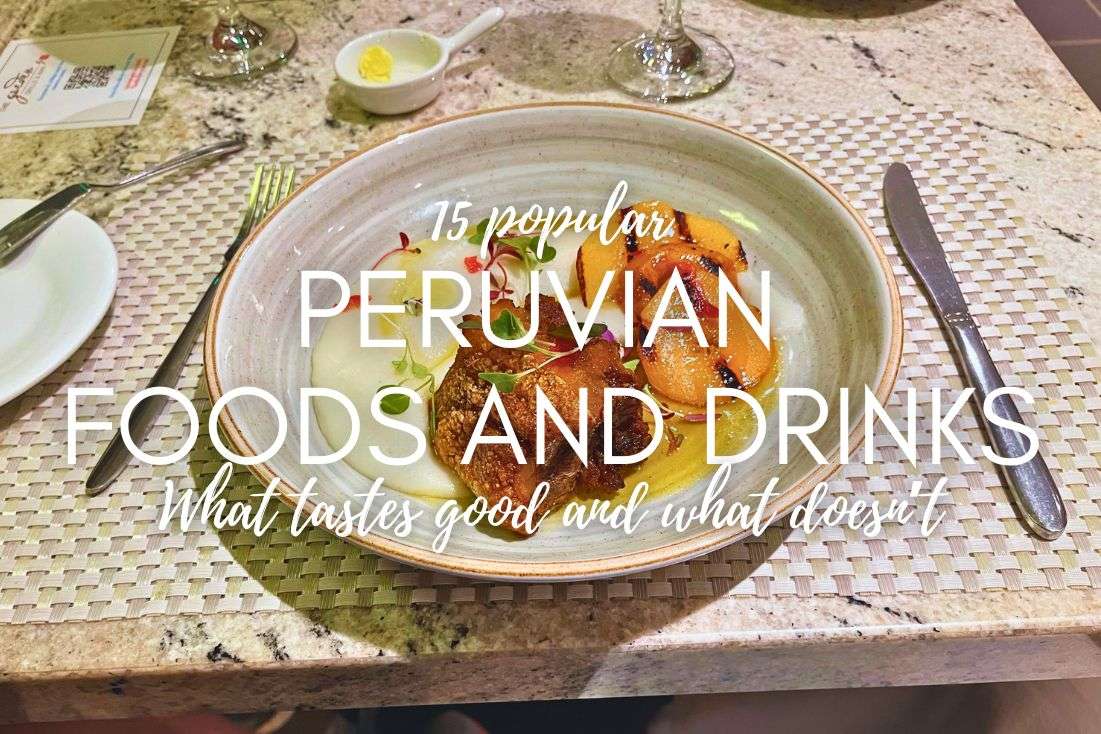
Since I’ve eaten alpaca meat and drank coca tea in Peru, I’m now an expert on Peruvian food, obviously. You’ve got to love a country where the food is so good and the prices of food are this low. Learn more about Peru.
I love to eat well, and Peru filled my stomachs’ desire and then some. My 2-week Peru itinerary is filled with tips on Peru’s best restaurants, so now let’s take a look at what Peruvian dishes to try.
If you’ve been following this blog at all, you know I’m also the meanest coffee critic. Does Peru’s coffee rise up to its reputation? We’ll touch on this caffeine-filled staple as well as some other typical Peruvian drinks, too. Like corn beer and the aforementioned altitude-sickness curing, illegal to export coca tea.
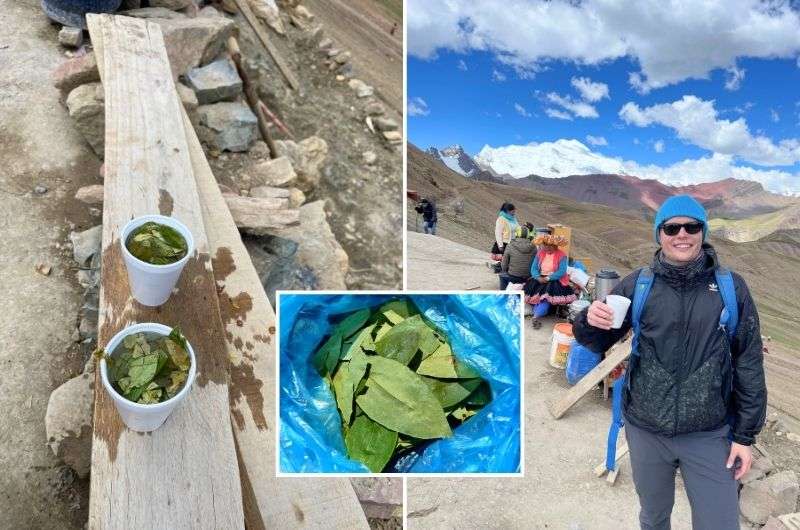
Coca tea compensates for the horrible Peruvian coffee. Not only does it taste pretty good, but it will also help you fight altitude sickness
My top tips on trying traditional Peruvian food and drinks:
- Ceviche is epic in Peru. Eat it in Peru’s best restaurants, but don’t have it for dinner. You don’t want to be eating raw fish if they’ve been lying around all day.
- Be prepared for a lot of meat. Yes, you can eat alpaca and guinea pigs. Chicken, beef, and lamb are the most popular though. You won’t find much pork.
- Actually, be prepared for a lot of everything, since serving sizes are massive in Peru.
- Peruvian beer sucks. There are craft breweries popping up that might be able to save the day, but just go in prepared. Or try chicha, the Peruvian corn beer.
- Peru’s coffee beans are top class, but don’t expect good coffee everywhere in Peru. They can’t make a good espresso!
- In Peru, staying at international hotel chains is key. Not only is it the best-value accommodation in the country (it’s not something I usually do, but in Peru, it made a difference), but as a bonus, a lot of these hotels come with a fantastic restaurant attached. For example, Cusco’s Hilton Garden Grille was one of my favorite places to eat in the whole city. And it was just a few floors from my room.
Fun facts about Peruvian food: What to expect when visiting Peru
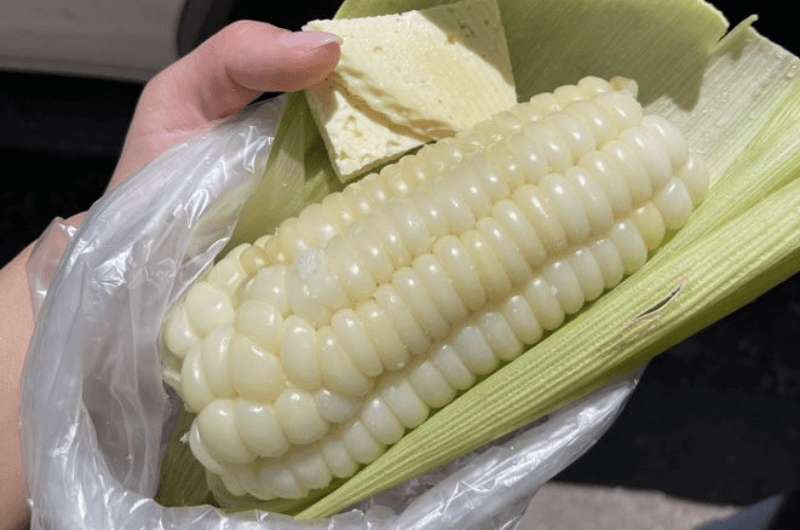
Look at the size of that corn!
1. Peru is the world’s leading culinary destination
Peru is the place to eat. It has won the title of World’s Leading Culinary Destination at the prestigious World Travel Awards in 9 out of the last 11 years. (We can turn a blind eye to that one year that Italy made its way to the top. And in 2024, Dubai snatched that title away from both!)
For me, Peruvian food is good, but not out of this world. I wouldn’t even put it in the top 3 in the world.
(In 2024, Peru also won South America's Leading Cultural Destination and Machu Picchu got the title of the World’s Leading Tourist Attraction. Not trying to brag, but Machu Picchu topped my list of the top places to visit in Peru, too.)
2. Peruvian food is delicious and affordable
In general, you can buy food in a restaurant for as little as s/10, which is about USD 2.50, or splurge and eat in a Michelin-level restaurant for s/60. You read that right. A gourmet meal for USD 15!
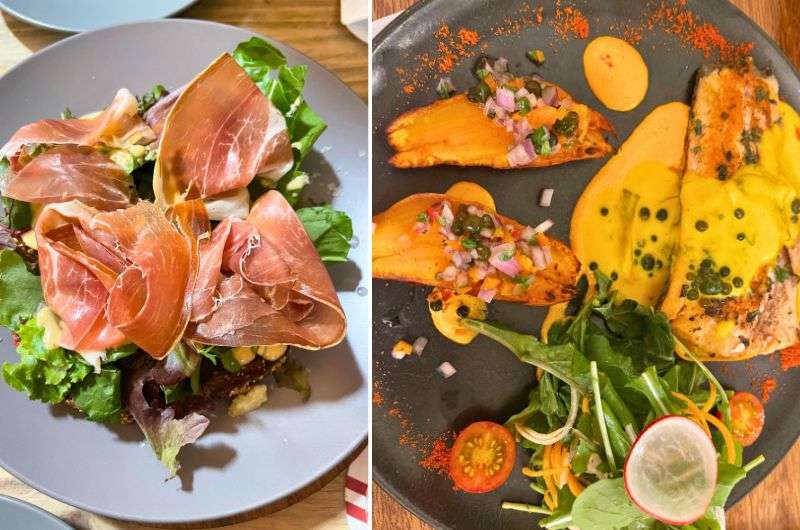
Peruvian food is delicious
As a bonus, serving sizes are massive, and if you love meat, you won’t be disappointed. If you don’t love meat, you better love corn and potatoes.
3. Peru has over 3,000 types of potatoes!
There are over 3,000 varieties of potatoes in Peru, a staple of traditional Peruvian food, and the country where potatoes were first domesticated (this designation spills over the boarder to Bolivia as well). The oldest findings (8,000 years old!) were made around Lake Titicaca.
The Incas basically survived on potatoes, and their methods of cultivation have influenced traditional Peruvian cooking, with thousands of potato varieties still grown today. They were the ones who, in their terraced agricultural laboratories, like the one at Moray, ended up growing thousands of different types of potatoes, most of which only grow in Peru to this day.
So, go ahead, try the boiled potatoes, sweet potato casserole, yellow potatoes, and any other potatoes you can get your hands on.
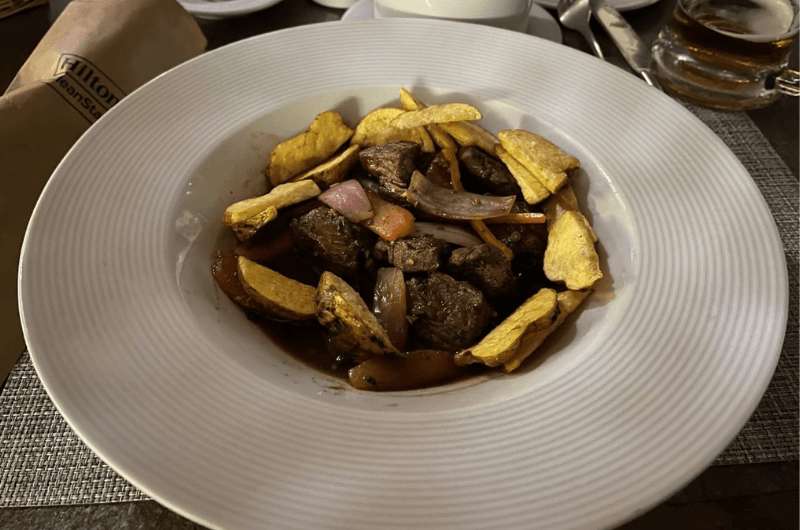
The most popular ingredients of Peruvian cuisine: meat and potatoes
4. Peru grows the world’s biggest corn—it’s massive!
Another familiar crop has benefitted from the Incas’ research: Peru has the biggest corn I’ve ever seen! Throughout Sacred Valley, which was the Inca Empire’s stomping grounds, you can get corn cobs with kernels the size of raspberries. Eat one cob and you’ve had your lunch!
5. Peru is a meat lover’s paradise
Meat is part of almost everything in Peruvian dishes. Chicken, beef, and lamb are the most popular meats in Peru, with guinea pig and alpaca being consumed in the Andean regions.
Other ingredients you will often encounter in Peruvian food are quinoa and legumes.
Fish are the main part of Peru’s national dish, ceviche, as well as plenty of other Peruvian meals. You can get a good steak just about everywhere in Peru.
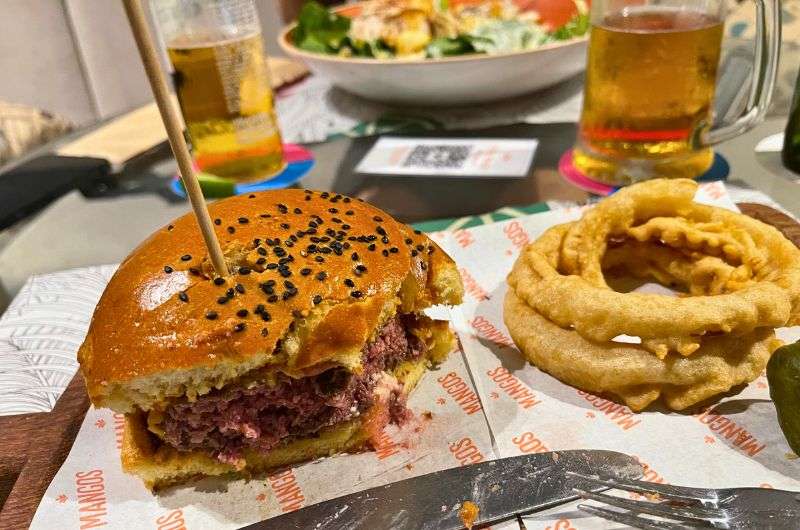
Peruvians love meat. Luckily, so do I! This is a burger I devoured in Lima
Pro tip: One of the restaurants in Peru I at amazing fish at was a very basic place right on the beach in Paracas National Reserve. La Tia Fela had plastic chairs, but the fish were out of this world!
Sometimes, all you need to do is take the first step... I've filtered out the best hotels in Peru for you
Save it for yourself to come back to later, or share with your friends on social media!
I've already planned your ititnerary for the trip, complete with my travel tips.
Typical Peruvian foods you have to try: The wonders of Peruvian cuisine
So what Peruvian foods can you make out of all the potatoes, corn and meat?
1. Ceviche: a typical Peruvian food
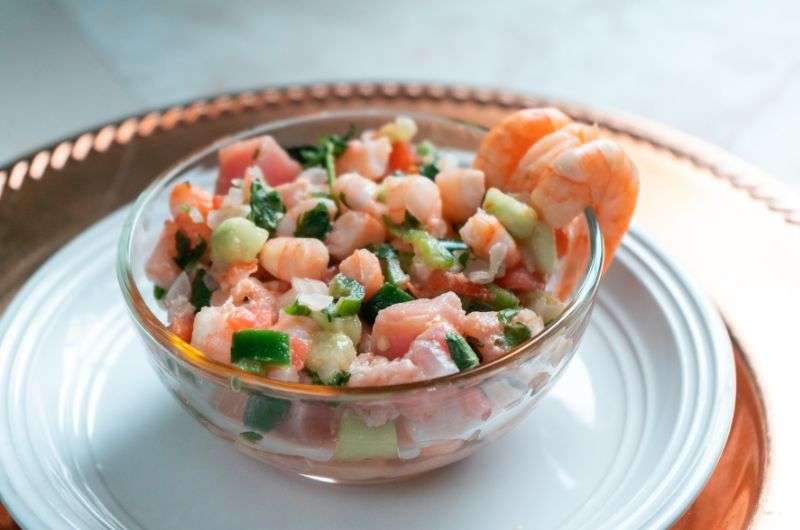
Ceviche—another gem of Peruvian cuisine
Any list of Peruvian food has to start with the unofficial national dish, ceviche. It’s raw fish marinated in lime juice, served cold.
Lime juice: a key ingredient in ceviche
But it’s not just the lime juice that makes ceviche taste delicious. Add sliced onions and chili peppers on top, some sweet (or other) potato on the side, and tadaaa!, you’ve got yourself some drool-worthy Peruvian ceviche (though sometimes you’ll see it in menus as cebiche).
Ceviche is admittedly not the most visually pleasing dish, but it‘s absolutely delicious, especially when served with a side of leche de tigre, a tangy, citrusy marinade. Though you can get it all over the country, Lima is the place to eat ceviche. We had an epic variety at Astrid y Gaston, as well as a mouth-watering one in Mayta.
Remember these two ceviche tips before you order:
- Eat ceviche early in the day. No sane local eating ceviche for dinner since fishermen bring in their haul in the early mornings. You don’t want to eat raw fish that aren’t fresh, do you?
- I have no other tip, just to main one: to eat a lot of it. Ceviche’s so simple but sooo good. The best food in Peru!
2. Empanadas: a Peruvian twist on a classic
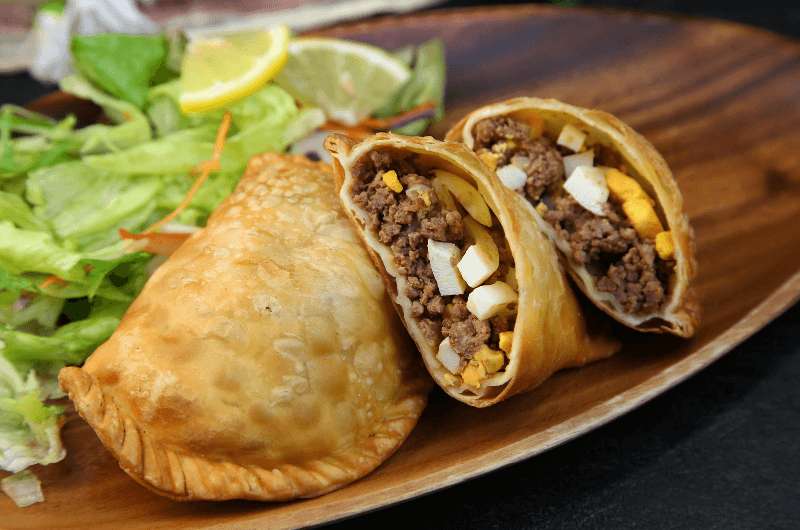
Every Peruvian grandma has her own empanadas recipe
An empanada is a fried or baked folded tortilla filled with a savory filling, which is usually some type of meat and vegetables.
Empanadas originated in Spain. When the Spaniards invited themselves over to the Americas, they brought not only horses, diseases and slavery, but were kind enough to bring empanadas, too.
Nowadays, empanadas are omnipresent everywhere from Mexico to Chile. Their fillings vary from country to country. The typical Peruvian variety usually includes fried ground beef, onions, olives, hard-boiled egg and, strangely, raisins.
That said, every Peruvian grandma will have her own special recipe, so you don’t ever really know which empanada type is The One.
As for how much I personally liked them: For me, you get two empanadas and you can be done. Been there, emapanada'd that. More ceviche please!
3. Peruvian kebab: marinated and charred to perfection
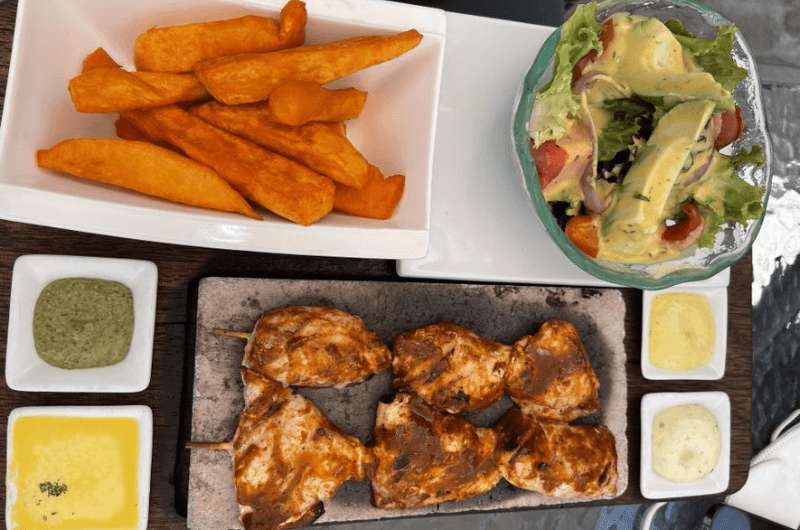
The best chicken kebab at Uchu Peruvian Streakhouse in Cusco
We tucked into a cozy-looking restaurant in Cusco called Uchu Peruvian Steakhouse and tried the peruano kebab. Instant love. The three chicken bits per skewer were larger than you’d normally see on a kebab, and they were amazing!
The Peruvian kebab can be chicken or beef, but it’s always full of flavor. The meat gets marinated in a herby, spicy mix. It’s usually a concoction of garlic, cumin, chili powder, paprika, sugar, soy sauce, lime juice and fresh ginger, making it taste almost Asian. Add the wonderful charred smokiness once you grill it over the fire and voila!
4. Chicharron: Peru’s crispy pork specialty
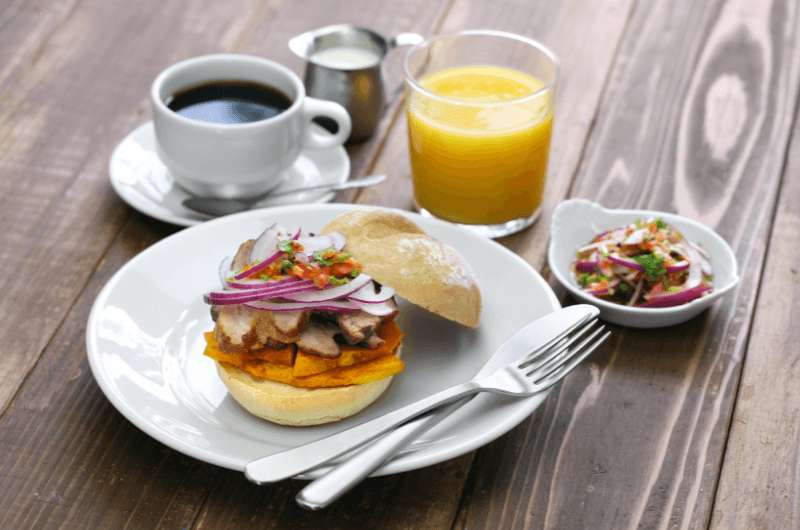
Try chicharron at the local chicharronerias
Chicharron is pieces of pork meat, which isn’t very popular in Peru, cooked and then fried in its own fat. Only seasoned with salt, it’s delicious just the way it is—crunchy on the outside, soft on the inside.
This simple meal is often eaten as part of a sandwich, Pan con Chicharron, which also includes sweet potatoes and red onion. Every region has its own twist on chicharron, so you can do taste tests while you travel through the top spots in Peru and see which one you’re a fan of.
Fun fact: chicharron sandwiches are commonly eaten as a breakfast food. But I think they’re perfect for any time of day.
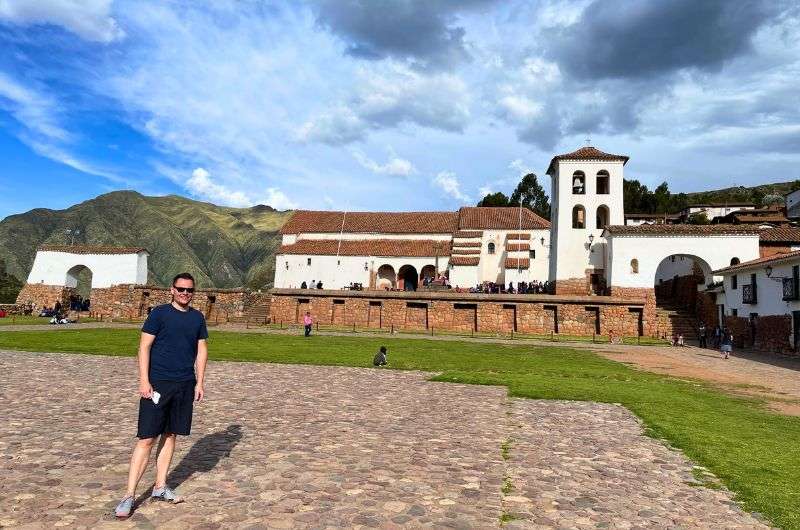
On my way through Sacred Valley, I stopped in Chinchero village. Then I made another stop for chicharron... see what I did there :)
There are even restaurants that specialize just in chicharron, called chicharronerias. You’ll find a bunch along the beach are in Lima, or in Poroy village outside of Cusco. Stop by on your way to or from your Sacred Valley tour for a quick and filling Peruvian meal.

Again, as was the case with Empanadas, the conquistadors are to thank for bringing the food over to Peru. This time from Andalusia in Spain.
5. Rocoto relleno: Peru’s stuffed spicy peppers
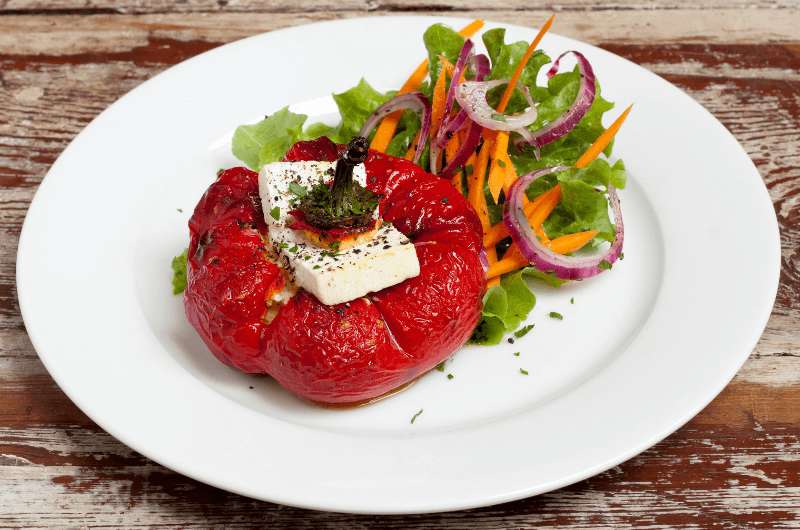
One rocoto relleno, coming right up!
The White City of Arequipa is a fantastic base for visiting the extremely deep (but somewhat disappointing) Colca Canyon, the magical landscape of the Laguna de Salinas or for conquering El Misti volcano.
Naturally, all of these activities will leave you hungry.
Enter rocoto relleno, a popular Peruvian food consisting of a small pepper stuffed with minced meat and topped with cheese, then baked. Sometimes it also includes a hard-boiled egg and raisins (seriously, what’s up with all the raisins!?).
Rocoto peppers are naturally extra spicy, so before the rocoto relleno is made, the peppers get soaked in water and vinegar so that the resulting meal doesn’t burn your tongue off. Or not, in which case get ready for a spicy punch in the mouth!
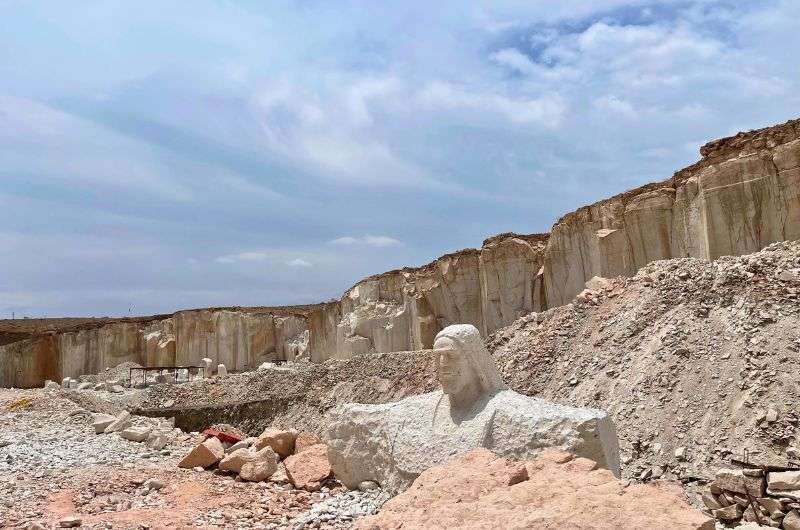
Arequipa, Peru’s White City
Rocoto relleno is also what gave me food poisoning, so I do have a love—hate relationship with this particular Peruvian food. It was good while it lasted though.

6. Sopa criolla: the comforting Peruvian soup
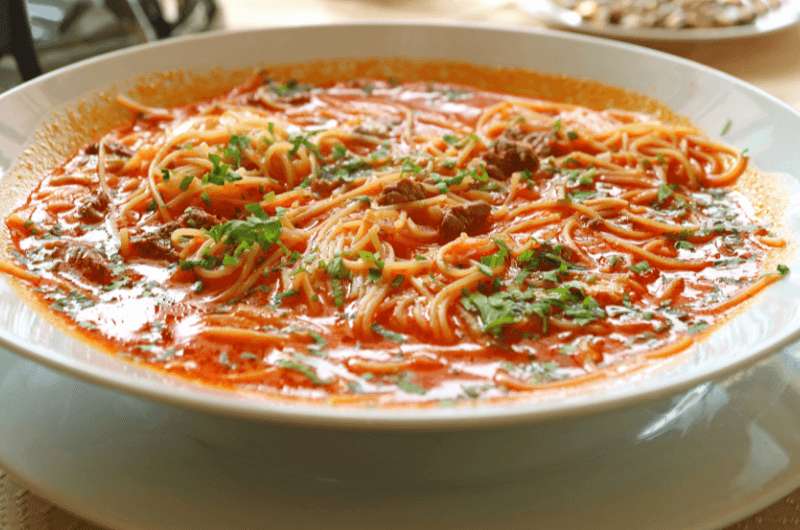
An eggless version of creole soup
Sopa Criolla is a beef noodle soup that is eaten all over Peru but is especially loved in Lima. Every family has a recipe for this staple meal, but it mostly includes beef, thin noodles, milk, tomatoes, and a fried egg on top.
Soups are a staple Peruvian food in general and are often eaten at breakfast. Otherwise, Creole soup is a comfort food good for any occasion and is also treated as chicken soup for battling a cold or flu.

7. Guinea pigs and alpacas: Peru’s exotic meats
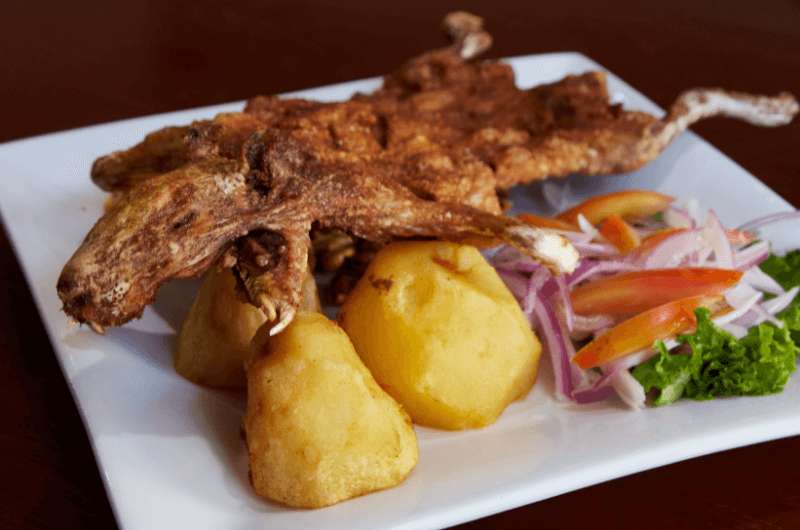
Yummy-looking (?) guinea pig, a traditional Peruvian dish
Not something most of us are used to seeing in the kitchen, much less eating for dinner, guinea pig meat—cuy—and alpaca meat are typical Peruvian dishes whether we think it’s yummy-looking or not.
These meats are much more popular with locals than with visitors, obviously. But it is such an anomaly that even I had to try some alpaca… and it wasn’t bad! Tastes kind of like pork but less fatty.
But also, not so good before setting out on a high-altitude hike. Guess how I know. I decided to have alpaca meat and then hike to Rainbow Mountain. Good times. A great way to remember that eating meat of any kind is not recommended if you think you might be experiencing mountain sickness any time soon.
I didn’t go down the cuy path, but you’ll see this little guys impaled and barbequed whole all over the Andes regions. Cusco and Sacred Valley will present you with plenty of opportunities to indulge in fried guinea pig, known locally as cuy, a bony, rabbit-tasting delicacy.
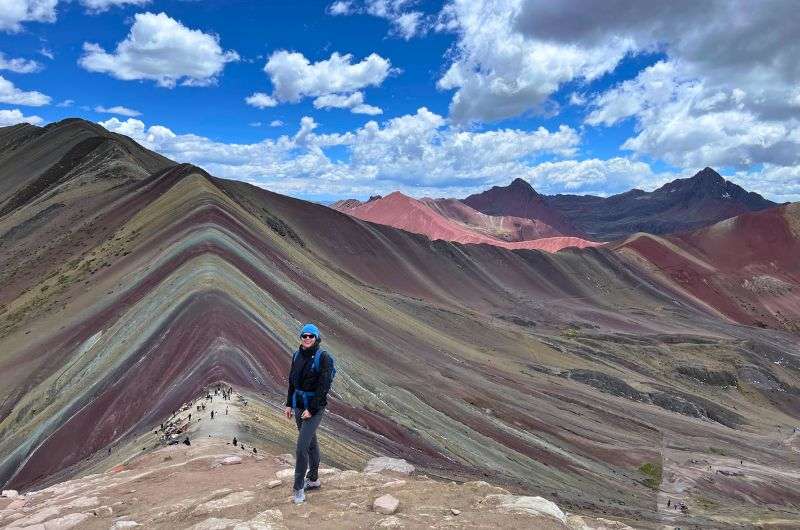
Conquering Vinicunca Rainbow Mountain
The head of the guinea pig is considered the best part. I wonder if it’s the part that Jesus and the apostles fought for when having the Last Supper. No really—you can go check out the decidedly Peruvian variant of this famous painting in the Cusco Cathedral.
8. Lucuma: Peru’s caramel-flavored fruit
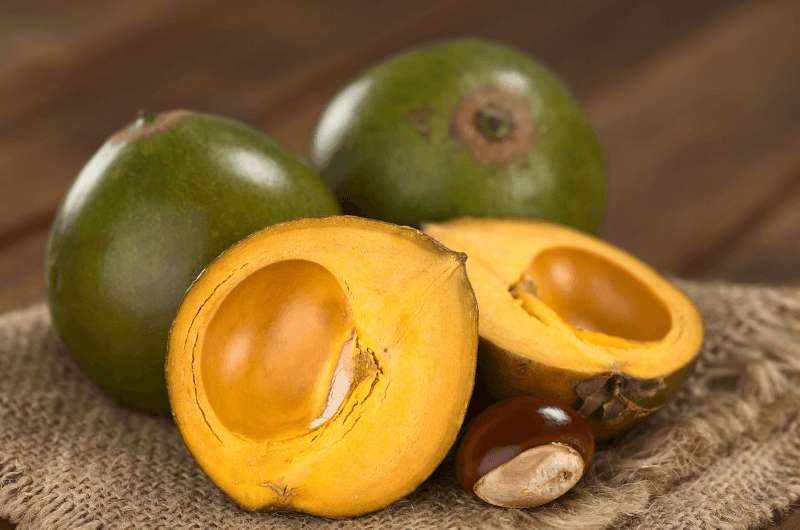
Lucuma
Lucuma is a fruit native to the highlands of Peru and parts of Chile. It’s having its 15 minutes of fame in the superfoods world lately. Though if you asked the Incas, they’d tell you all about the lucuma’s health benefits centuries ago.
A lucuma looks like a cross between a mango and an avocado, just smaller and rounder. It has a green outer skin and an orange inside.
It ripens during the months of January to April in Peru, when you can find lucuma in all markets and grocery stores.
The interesting part is the taste: lucuma tastes like slightly fruity caramel. But while it looks enticing, don’t go biting into a lucuma just yet. It’s actually pretty dry, so the preferred way to consume lacuma is in everything from ice-cream to smoothies. You get the yummy goodness without the weird texture.
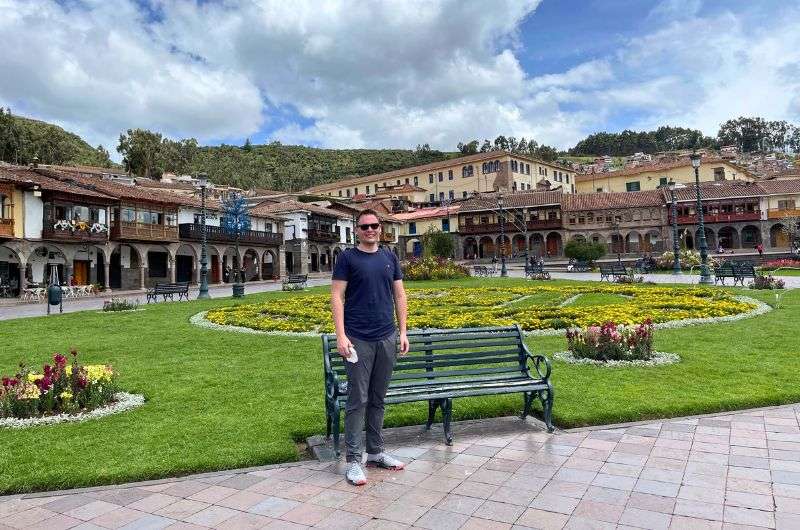
Hello from Cusco!
Thanks to its great taste and health benefits, you can find lucuma in specialty and health food stores around the world in powdered form.
Popular Peruvian drinks tourists will love
Speaking of smoothies, it’s time to make our way from Peruvian food to typical Peruvian drinks, like chicha and coca tea.
9. Coca tea: Peru’s altitude sickness remedy
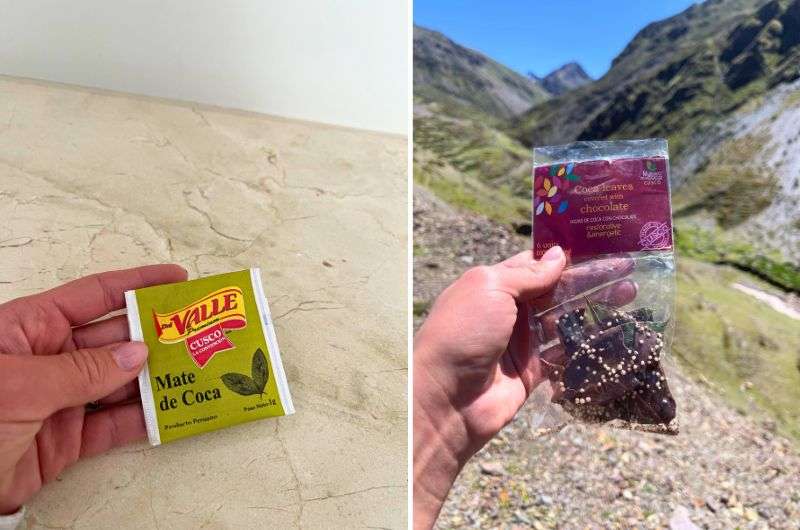
Mate de coca and coca chocolate leaves were my favorite first aids for altitude sickness
Coca tea, also known as mate de coca, looks and tastes kind of like green tea, just with a little more sweetness to it.
At some point during your trip to Peru you’ll most likely make your way to Cusco, which, with an elevation of of 3,400 m (11,000 ft), is considered a high-altitude destination. And you’ll be offered coca tea or even chocolate-covered coca leaves to alleviate the symptoms you might develop due to the lack of oxygen. Or, you can just chew them raw if you’re in a pickle.
How coca helps with altitude sickness
Why coca helps with altitude sickness hasn’t properly been studied, but it seems that it helps with the absorption of oxygen, which is great since you’ll be struggling with not getting enough of it. It’s also a mild stimulant, helping with fatigue, which is great, because guess what? Not breathing enough makes you feel like a 98 year-old grandpa even if you’re just walking around the city!
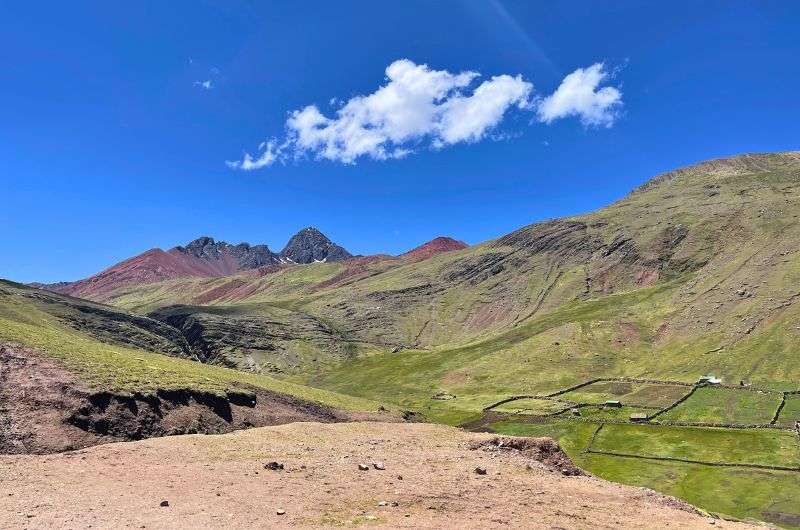
In Peru you get to really high altitudes, so you'll appreciate the coca tea available everywhere
Fun fact: The amount of oxygen in the air is the same at all altitudes. But the air pressure is smaller the higher up you go, effectively leading to the oxygen molecules not being pushed together with the same force as in lower altitudes. Since they have all this room to spread out, they do, and with every breath you take, you suck in less of them than you normally would. That’s why you’re constantly out of breath at high altitudes (read my article about altitude sickness for more fascinating facts).
Coca tea is sold by locals on some hikes around Cusco
Imagine you’re trying to hike to Rainbow Mountain with . Were it in any other (lower) altitude, it would be considered an easy hike. But at 5,200 m (17,000 ft), you see your life flash in front of your eyes and try not to step in the throw up of your fellow travelers. Coca tea is offered by many kind locals along the entire route of the trek. I drank buckets of it. It helped a little.
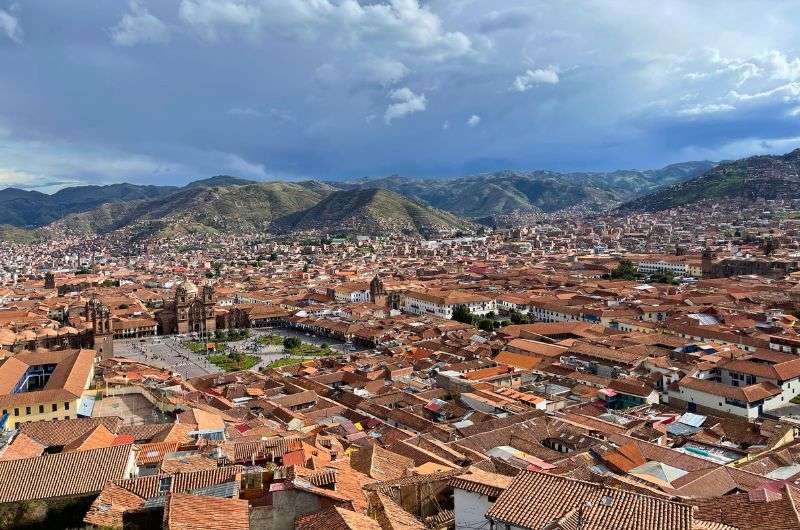
Cusco offers coca tea at every corner
You won’t pass your drug test
Coca leaves contain cocaine. Not crazy amounts, just very little, but enough to get all the authorities in the world all wound up about it. It is illegal to take coca tea leaves or tea bags to your home country as a souvenir. Something I found out about too late after I cleaned out the gift shop in Cusco’s coca museum. (Had to leave it all at the airport.)
Coca Cola is made out of coca!
Another fun fact: If you really want a coca drink while reminiscing about Peru when you come home, have a glass of Coca Cola. The exact recipe for it is a trade secret, but it started out as a coca drink and still contains coca leaves to this day. Just ones with only trace levels of anything in it, but still, coca leaves!
10. Peruvian coffee: great beans, poor execution
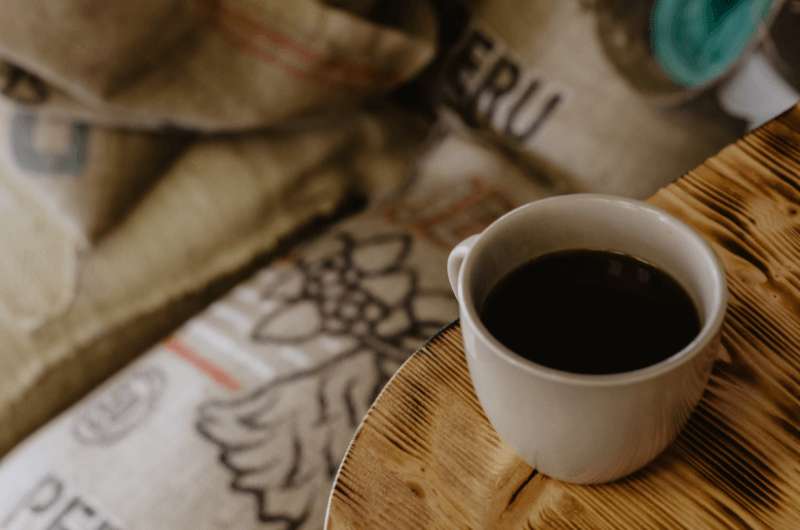
Peruvians like their coffee black with a bit of sugar, and sometimes with condensed milk. If they drink it at all
I love coffee and a lot of places on this planet have me scrambling to find a decent cup during our travels. Looking at you, Spain! That was tough.
And Peru, well, you have amazing, great quality coffee beans, but you don’t know how to cook the damn things! Every “expresso” (that’s how they spell it) I tried tasted like a baby Americano. A watered-down version of real coffee.
For a good coffee, check online reviews and aim for the more hipster places. They might even have real espresso!
Fun fact: In the 2022–2023 season, Peru produced 216,000 tons of Arabica coffee, ranking as the 9th-largest producer worldwide. Peru is also recognized as the world's leading producer of certified Fair Trade and organic Arabica coffee. But, again, too bad they can’t make a decent cup out of it!
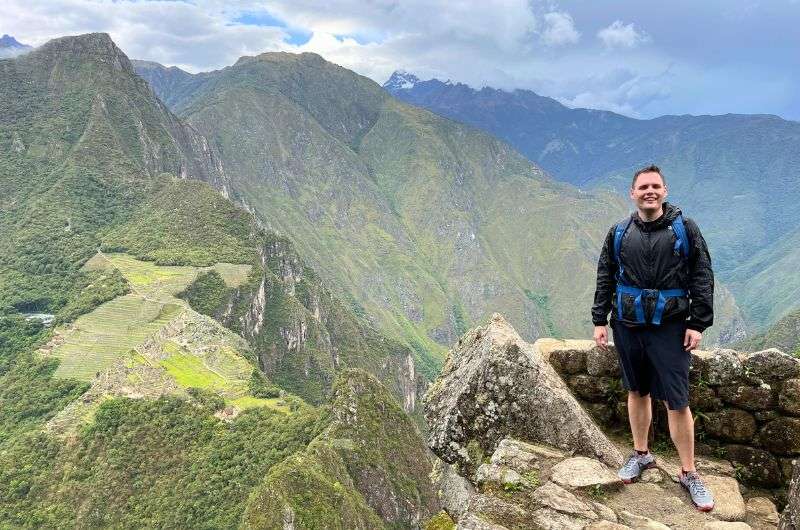
How about a cup of coffee at Machu Picchu? (just kidding, there are no amenities there)
Peruvians don’t even like coffee
Despite producing 200,000 tons of coffee per year, Peruvians don’t actually like to drink coffee that much. Only 10% of their production is meant for domestic consumption.
The stats:
- Peru: Approximately 800 g (1.7 pounds) per person annually.
- United States: Around 4.5 kg (9.9 pounds) per person each year.
- Finland: Leading globally with about 12 kg (26.5 pounds) per capita annually! 10–15 minute coffee breaks are commonly integrated into the Finnish workday through collective agreements and workplace practices!
11. Chicha: Peru’s unique corn beer
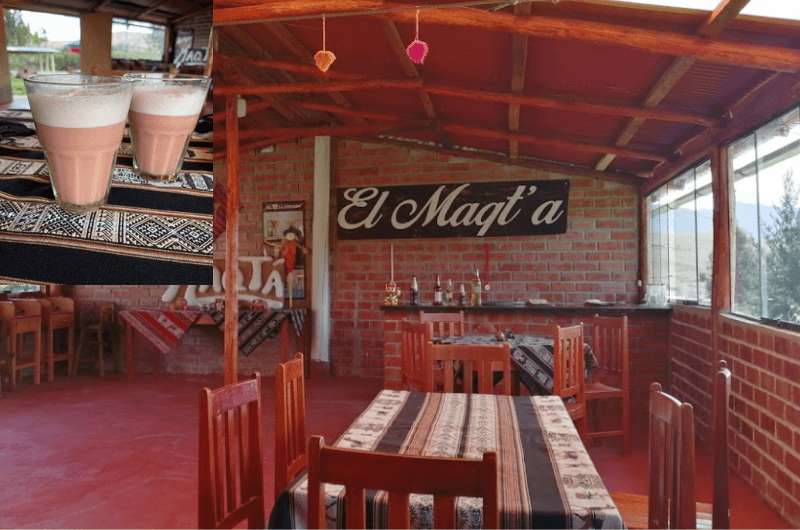
Chicha at El Maqt’a Restaurant, a gem I stumbled upon in Sacred Valley
Another favorite beverage of mine is beer. In Peru, there’s one called chicha morada, a sweet drink made from purple corn. Unlike my high standards for coffee, I’m pretty lenient with my beer expectations. I can drink it anywhere in the world and just appreciate the diversity of tastes rather than go looking for what I’m used to.
But Peru. Come on Peru. Peru is the only country I’ve been to where I’ve not liked the beer.
Enter chicha. A pink beer made out of corn that tastes a little like strawberries. It looks like something kids would love to drink, and, to my fascination, they did!
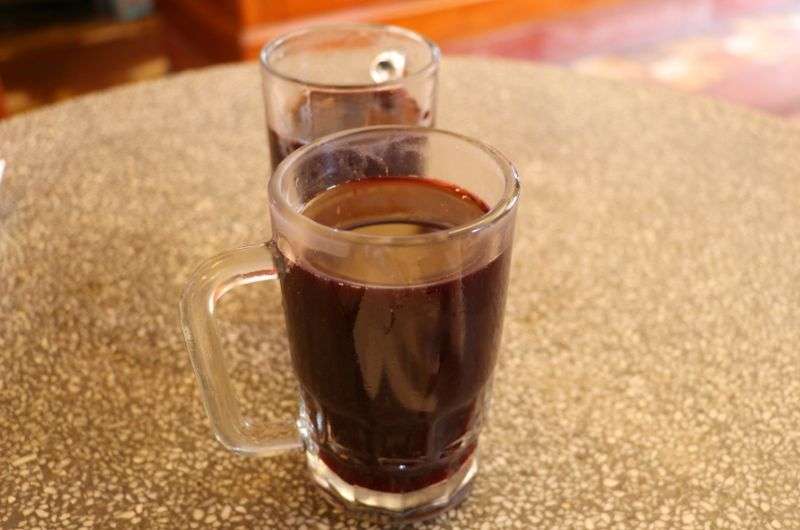
Chicha morada, the purple corn beer
Children in Peru drink chicha too
Upon further research I’ve realized that there are fermented and non-fermented variants of chicha, the latter of which do not contain alcohol. I’m hoping that’s the one the children were drinking. Otherwise, someone please get these kids a milkshake!
Even though chicha is so typically Peruvian, it’s relatively hard to get at Peru’s restaurants. Chicha is made within local communities or even just families, usually on the weekends. So, if you happen to be there when a fresh batch of chicha is made, you’re in luck. Try out village restaurants as opposed to restaurants in the cities. Otherwise, you’re stuck with bad Peruvian beer.
12. Peruvian pisco drinks: Peru’s pride and joy
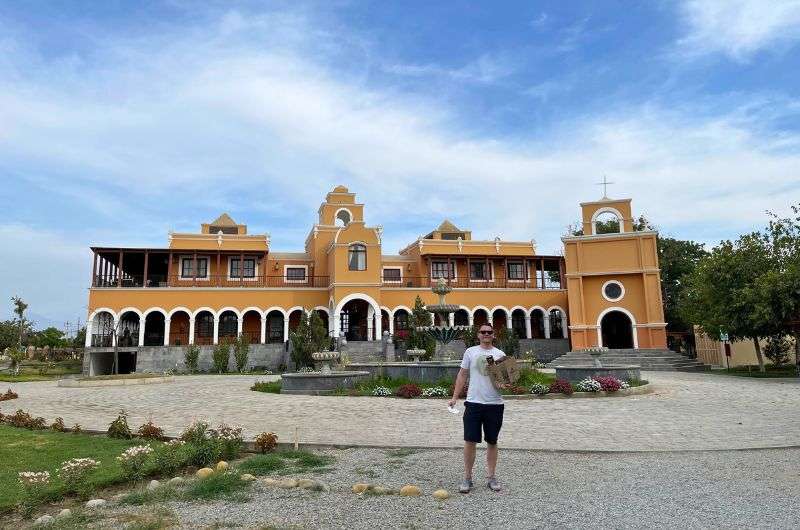
Touring and tasting at the oldest distillery in South America, La Caravedo in Ica (near Paracas, Peru)
The beer sucks and there’s no chicha available. Now what? Grape brandy! Pisco is Peru’s pride and joy, though they are fighting Chile for the designation of being the country where this strong spirit originated.
The first historical mentions of pisco are from Ica in Peru in the 1600s, which gives Peru the upper hand in the dispute. We ventured out into the Ica vineyards to take a tour of oldest distillery in South America—established in 1684—, La Caravedo. Read more about our day trip in my article about places to see in (and around) Paracas.
Tip: La Caravedo also provides stunning accommodation with an incredible looking swimming pool, as well as one of the best restaurants we ate at in Peru. This isn’t France, but maybe a weekend in the vineyards in Peru is just what you need!
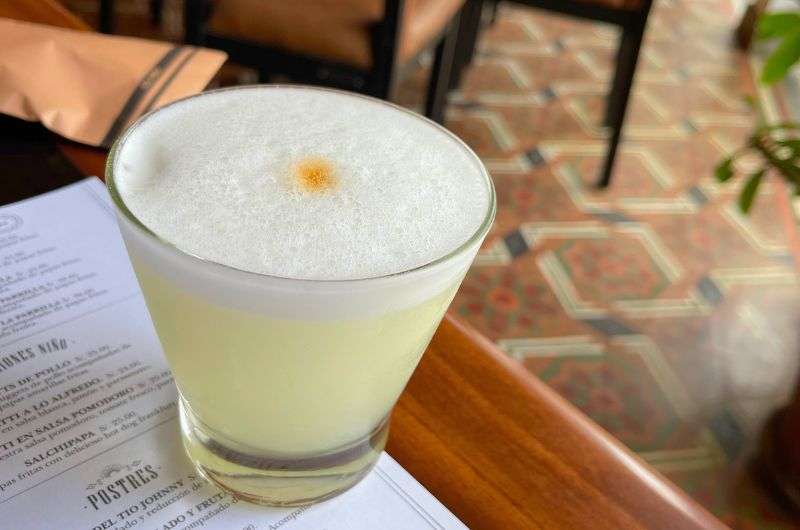
Getting our pisco sour on at La Caravedo restaurant Los Horcones in Ica
If pisco is too much for you, try pisco sour
Peru enforces strict rules about where and how pisco can be produced, and one of those rules prohibits adding water after distillation, as is the standard in other drinks such as vodka or whiskey. What that means is that pisco packs a punch with 38–48% alcohol.
If you want to drink something a little less potent and a little more fun, opt for the popular Peruvian pisco drink called pisco sour. It mixes pisco brandy with syrup, lime juice, egg whites and bitters to create an herby, tarty, sweet drink. It’s good!
Pisco sour looks like a little colorless beer with a nice foamy white top.
Again, Chile claims that pisco sour is their national drink, as does Peru. I’m over here tired of all the fighting, wishing everyone would just chill out. Have a pisco sour and relax!
13. Inca Kola: Peru’s bubblegum-flavored soda
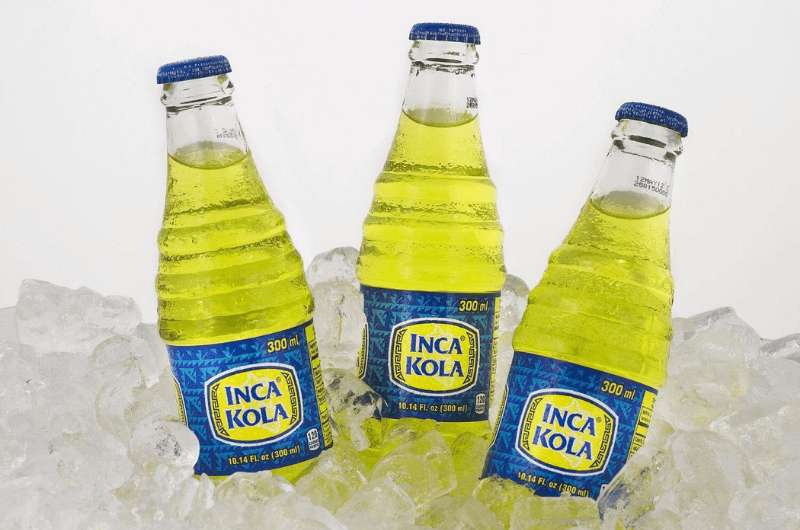
It looks yellow, but it tastes pink!
An institution in Peru, Inca Kola is a yellow soda that is a national pride in the country. It doesn’t look like much with its bright yellow color, and it doesn’t really taste like much either, if you ask me. Unless you like bubblegum flavor.
You’d think that it would have a lemon flavor, not only thanks to the color, but also since the main ingredient is lemon verbena, which is a shrub whose leaves are used to add lemon flavor to everything from salad dressings to jams. But Inca Kola tastes pink.
Inca Kola is known in international trade as Golden Kola. The Inca Kola trademark is owned by the Coca Cola Company everywhere except for in Peru where Corporación Inca Kola Perú. It’s a company owned by the family whose member invented Inka Cola in 1935 (a British immigrant). To be precise, it’s a joint venture of the Lindley family (the original creators of Inca Kola) and the Coca Cola Company.
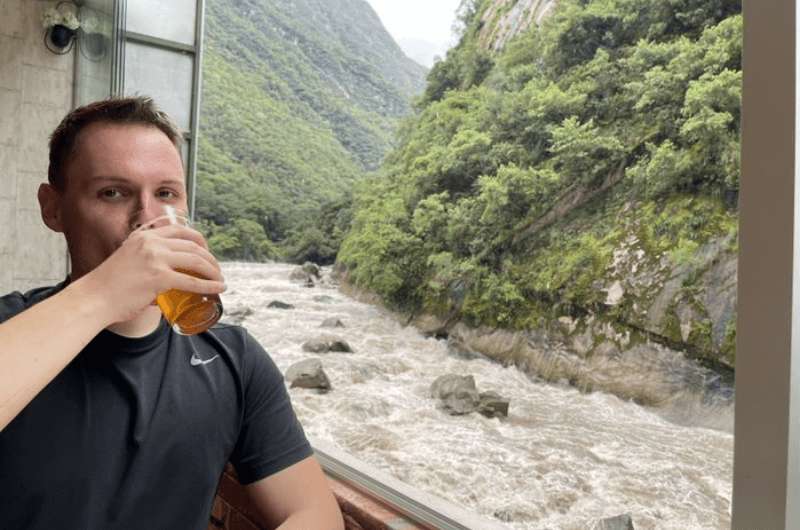
Enjoying my time at one of my favorite restaurants in Peru, Chullos in Aguas Calientes (near Machu Picchu)--they actually had decent beer there!
Sometimes, all you need to do is take the first step... I've filtered out the best hotels in Peru for you
Save it for yourself to come back to later, or share with your friends on social media!
I've already planned your ititnerary for the trip, complete with my travel tips.
You might also be interested in reading:
- The Best 3-Day Cusco Itinerary with Sacred Valley Day Trip
- A 2-Week Peru Itinerary: A Day-By-Day Trip Plan
- Top 14 Handpicked Luxury Hotels in Peru (With Prices)
- The 10 Best Ruins to Visit in Peru
- Top 9 Places to See in Sacred Valley
This post may contain affiliate links. We earn a small commission if you make bookings through my links, at no additional cost to you. Thank you for your support!




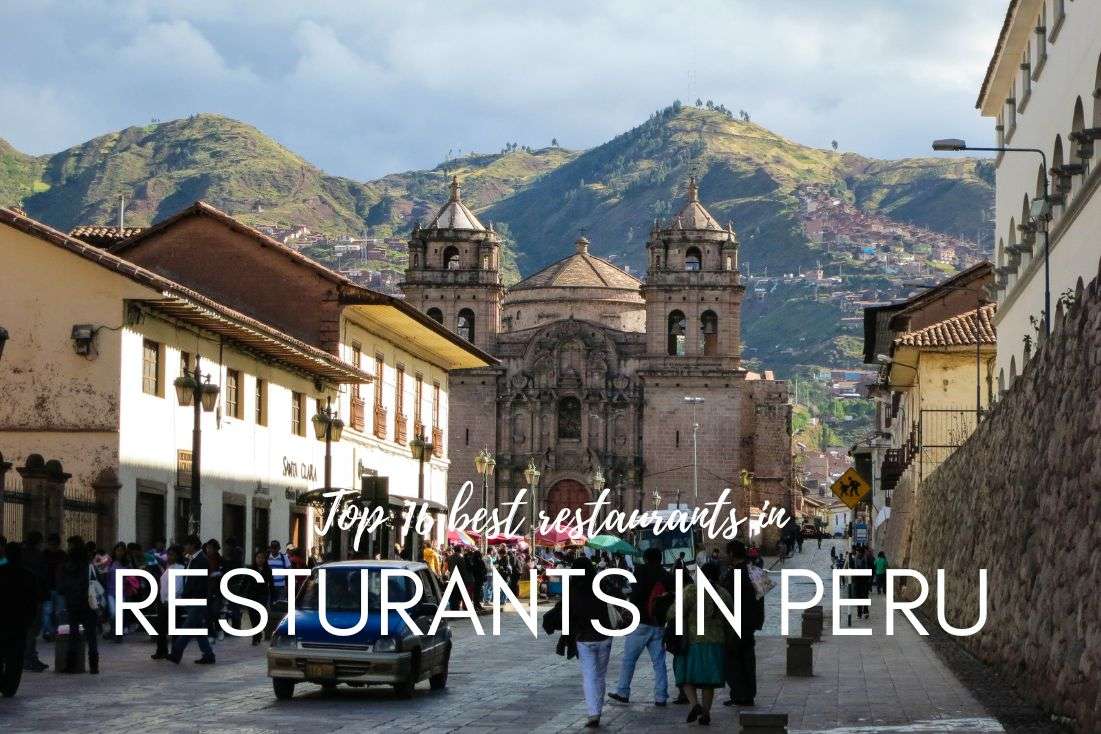
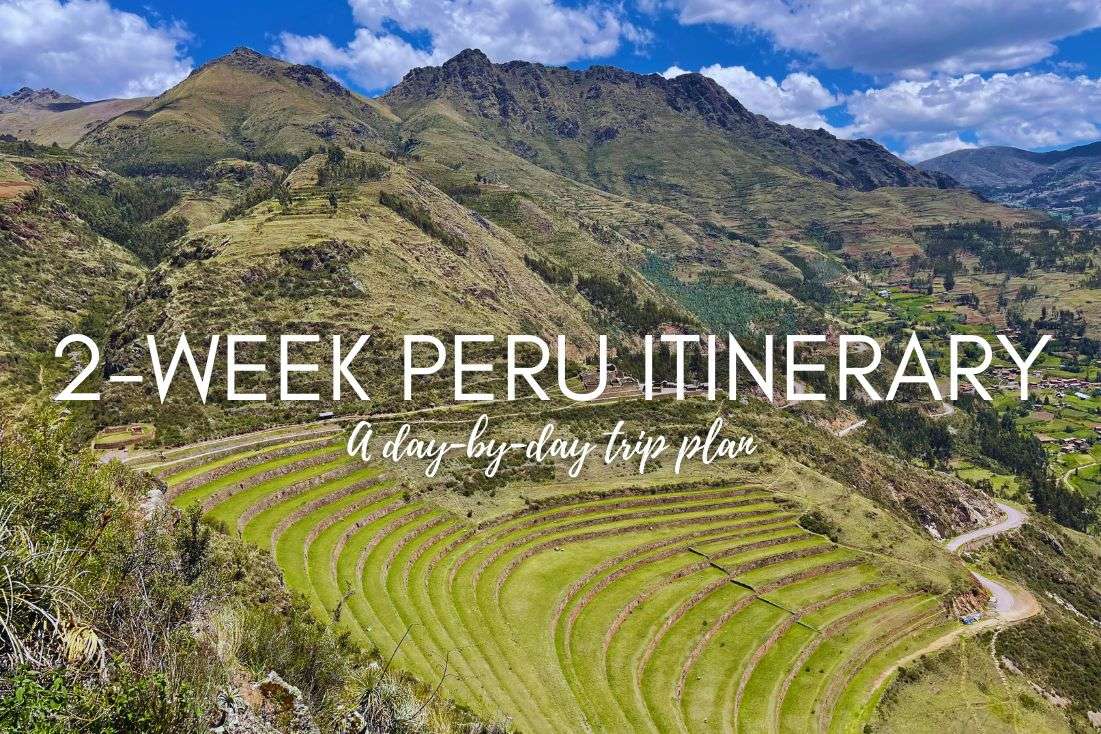
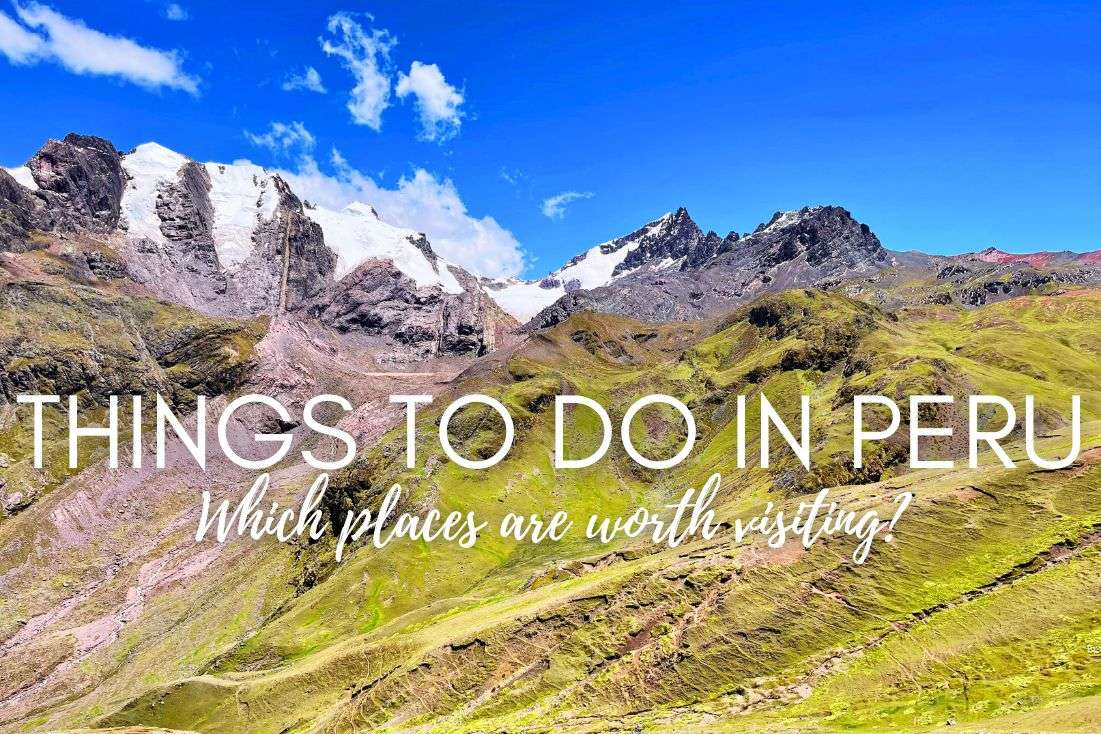



Comments | Thoughts? Give us a shout!